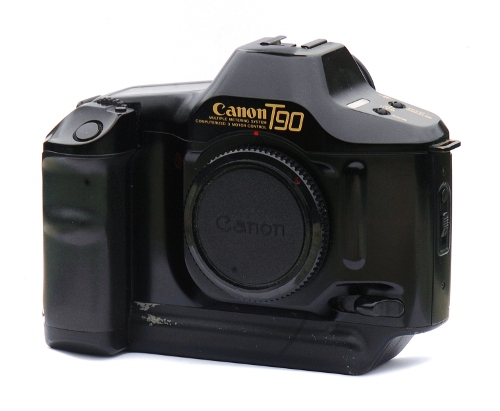
from Shutter, by Lewis Collard

This article was written in 2010.
This is the Canon T90, the last[1] and most advanced Canon FD-mount camera, and the camera which, for better or worse, influenced the styling and ergonomics of every 35mm SLR camera, Canon or otherwise, made since. Go and take a look at it side-by-side with 2007's EOS 40D. Or just compare it to any camera made before 1986. (Bonus: the curvy body is much easier to clean than the angular nooks-and-crannies of every other manual focus camera.)
I almost wrote more than a paragraph to introduce it, but you know, that's all pretty boring, so here's a pretty picture taken with one:
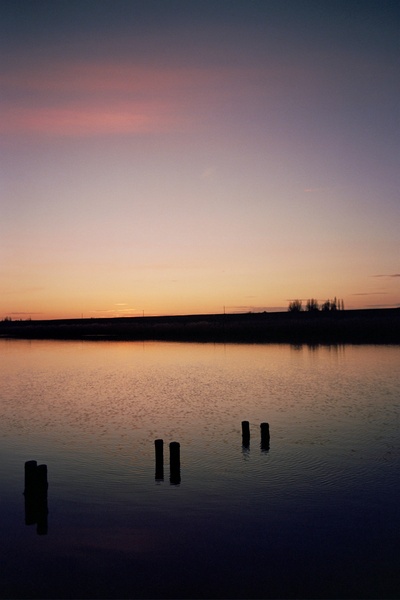
Stumps. Canon T90 and Canon FD 28mm f/2.8 shooting
Kodak Ektar 100.
Centre-weighted, partial, and some weird multi-spot mode I've not worked out how to use. Again, on that last count, this camera was way ahead of its time, in adding a whole bunch of features that few people use and even seasoned photographers can't work out, so hooray for Canon. Another thing I can't work out without reading the manual (I don't really believe in reading manuals): the "safety shift" function in aperture-priority and shutter-priority modes.
You get Av (aperture priority), Tv (shutter priority), Program (fixed programmed automatic), P (the same but with the program shiftable in whole stops), and fully manual mode. Also, it counts "Bulb" as a mode, for some reason.
The camera will be just fine with any DX-coded film from ISO 25 to ISO 5000 (pretty much every film around today), or ISO 6 to ISO 6400 if you set it manually (really, were there any ISO 6 films in the world when the T90 was made?). I'm paranoid, so I always hit the "ISO" button to check that it's read the DX code correctly (it always has).
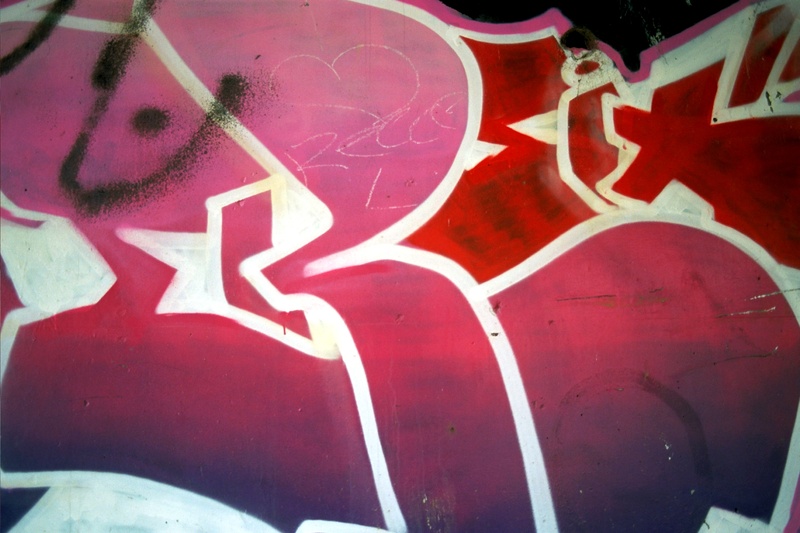
Pink and red. Canon T90 and Canon FD 28mm f/2.8 shooting
Kodak Ektar 100.
Canon FD. This is not to be confused with the later, completely incompatible in both directions Canon EF mount for autofocus EOS cameras. As I've said before, this is great for us film photographers, because we get really good lenses incredibly cheap (so cheap that it's not worth bothering with non-Canon lenses). Weirdos can mount M42 lenses, FL lenses, and many others via an adapter. I haven't tried this.
For what it's worth, I like Canon's two cheapest lenses: the 50mm f/1.8 and the 28mm f/2.8, for their price, size, and great optics. These will set you back about as much as a camera strap and 10 pints of Strongbow at a pub, respectively. It originally shipped with a 50mm f/1.4.
For the fashion-conscious photographer, you'll not want old-school FD lenses with chrome locking ring. I love those lenses, but they look weird on the sculpted, modern-looking T90.

One. Canon T90 and Canon FD 50mm f/1.8 shooting
Kodak Ektar 100.
The T90 has no PC (Pronto-Compur, not Personal Computer[2]) socket for use with studio strobes. I read that Canon used to be able to retrofit these. I'm sure there's some crazy people out there who have hacked this themselves; if you're one of them, do let me know.
You'll get TTL flash metering if you use the right flash with the T90. Canon's Speedlite 300TL was made for the T90. Wikipedia says that the current Speedlite 580 EX II will work with it too; Wikipedia also has a habit of killing people off from time to time, so don't read too much into this.
We complain about digital stuff going obsolete in two years, but it was just as bad in the 1980s. The A-series cameras used one flash system, then the T50 and T70 introduced a completely different one, and then the T90 pulled another one out of a hat. And then Canon made the entire FD system obsolete! That's probably why primitive flashes such as the Vivitar 283 which actually worked with more than one camera lasted for so long.
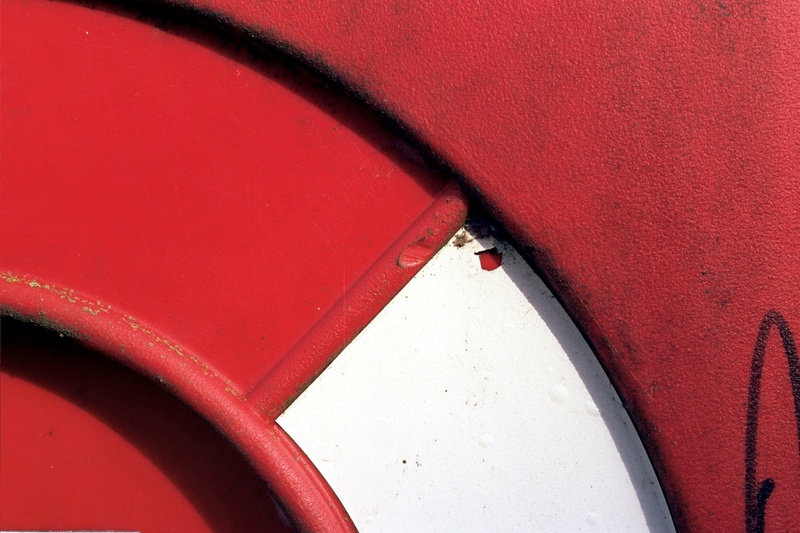
Red and white. Canon T90 and Canon FD
50mm f/1.8 shooting Kodak Ektar 100.
The typical enormous, bright viewfinder of a real camera. I can't wear glasses while using this camera because of the size of it.
It's simple, as long as you're shooting in one of the more sensible modes; just aperture, shutter speed, a rough indication of how many shots remain and an "M" to chastise you for taking your lens off the "A" mark, plus a little asterisk to remind you when you're using the AE lock.
Unlike the A-1, the T90 gives you a rough indication in the viewfinder of how many frames you have left. This is good, if you are in 1986 and shooting action with it at 5 frames a second. It's clutter if you're shooting stills with it, which you are today.

Tentacles. Canon T90 and Canon FD
50mm f/1.8 shooting Kodak Ektar 100.
Electromagnetically controlled metal focal-plane shutter, with a top speed of 1/4000th second. It'll automatically time out exposures up to 30 seconds. Flash sync is at 1/250, which makes this £100 (used) camera better for flash photography than today's £1800 Canon 5D Mk II, and as good as today's £5000 Nikon D3X. Awesome.
You can't use standard cable releases with this, only a proprietary electronic one. I am undisposed to buying a new remote every time I play with a different camera, so I'm not going to get one. The Canon A-1 takes a standard cable release; it does the same thing with fewer electronics for less money.
I know (!) you're dying to hear what the shutter sounds like at four and a half frames a second, so here you go: The T90's shutter sound (MP3), first at 4.5FPS then at 5fps with the stopped-down-metering switch pressed.
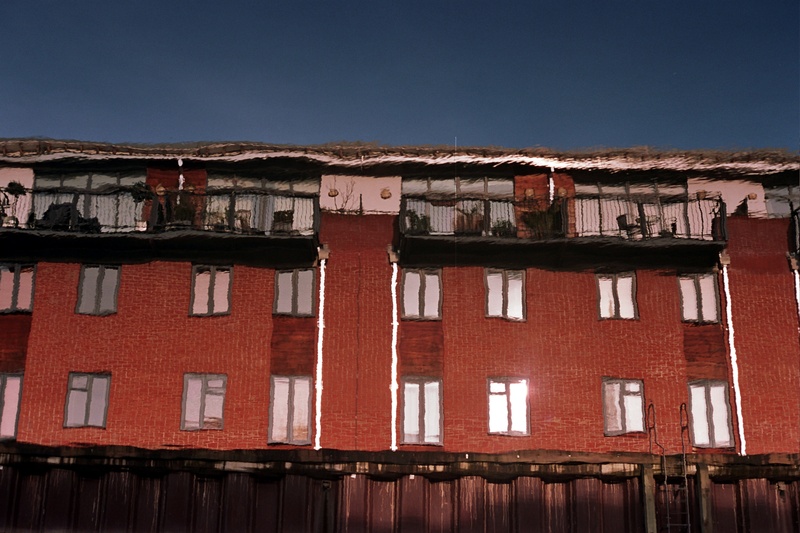
On reflection, III. Canon T90 and Canon FD
50mm f/1.8 shooting Kodak Ektar 100.
Motorised. You get single-frame, low-speed continuous (about 2 frames a second), and high-speed continuous (4.5 frames a second). I shoot in low-speed continuous mode. When I'm shooting film I'm usually shooting still subjects, and 4.5 frames a second can burn through a roll of film faster than you might think.
Film loading is automatic. Rewind is automatic too, and happens at exactly 36 frames for a 36-exposure roll of film.
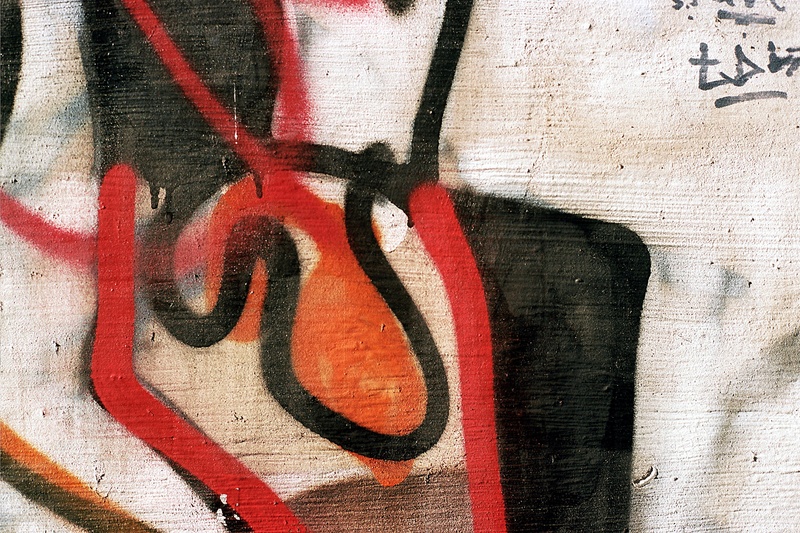
Squiggles. Canon T90 and Canon FD 50mm
f/1.8 shooting Kodak Ektar 100.
Four AA batteries. The manual mentions alkaline, carbon-zinc or Ni-Cd batteries. I don't know what happens if you put Ni-Mh batteries through it, sorry. I suspect it'll be fine. The camera is totally dead without batteries; there's no rewind crank so you can't even rewind the film. No biggy. It'll be happy with any cheap, crappy AA batteries that you can buy almost anywhere. Better yet: it has voltage regulation circuits built in. Not all cameras of its era did! No matter how low your batteries are, you will never get a bad exposure. It'll either fire and make a correct exposure, or it won't fire at all.
I don't know what happens if the batteries end up completely drained during the (motorised) film rewind. Anyone want to clue me in?
My one seems to drain the battery way too quickly. I went from fully charged batteries (three bars) to a partly-discharged one (two bars) in less than half a roll of film.
There's also a second, internal battery. As far as I have read this powers the circuits that remember stuff like your ISO, your frame counter, and stuff like that. This isn't a user-serviceable part. This was a bad design decision! I don't know how you will fix this today.

Yeah, right. Canon T90 and Canon FD
28mm f/2.8 shooting Kodak Ektar 100.
During its prime, this was legendarily reliable, earning the nickname of "the tank". These days, LCD displays die, electronics toast themselves, EEE errors come from bad electrical connections, and so on. Sorry. You might want to buy two and keep one around for spares. Bear in mind, this was pushing some serious new ground for its time, so it's more surprising that they're not going wrong more often. (Fun fact: It has no less than three electric motors and two processors and God-alone-knows how many solenoids, magnets and circuits. No user-serviceable parts inside!)
My one works just fine, so ha.
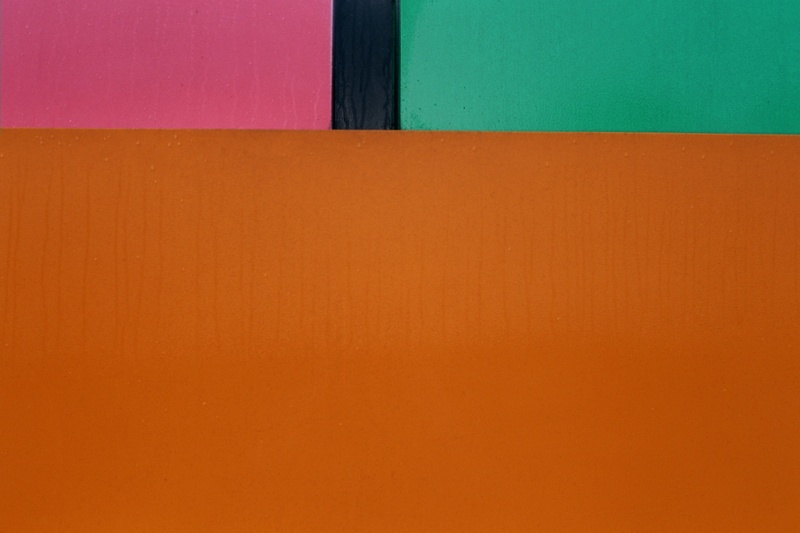
Pink, green and orange. Canon T90 and
Canon FD 50mm f/1.8 shooting Kodak Ektar 100.
I got mine from fleaBay for £100, complete with an original dead-tree manual, a body cap and a strap, and sold it in 2011 for £60 in an eBay auction (which made me think I overpaid the first time). If you're smart or brave, you can probably buy a dead one for low-double-digits.

wat: your reaction when you
read that I prefer an older, cruder and uglier camera. Also, this one
goes out to Monica. :)
I prefer the A-1.
If things like 4.5 frames a second, shiftable program, manual operation, 1/4000th second shutter speeds, 1/250 flash sync and random electronic failures are important to you, then get a T90. These things don't matter to me, but the simplicity and lighter weight of the A-1 does, which is much of the reason I sold my T90.
Whatever sinks your sub. If you have one of these then love it, cherish it, and go out and take some awesome photographs with it and ignore what I have to say here. I like the simplicity of the A-1, but the superior ergonomics of the T90 are a pretty nice thing to have.
I had huge crazy fun shooting this beast, so you can ignore my nitpicking if you own one. Get out there and shoot.
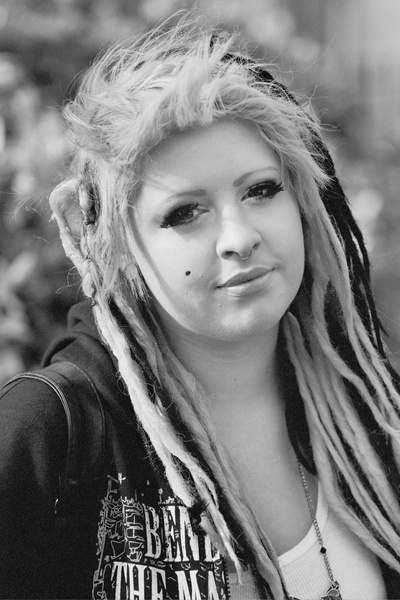
Liana, IV. Canon T90 and Canon FD 135mm
f/3.5 (wide open) shooting Kodak BW400CN. I should have used fill flash on
this, but I couldn't find my battery charger that morning. Oh well. :)